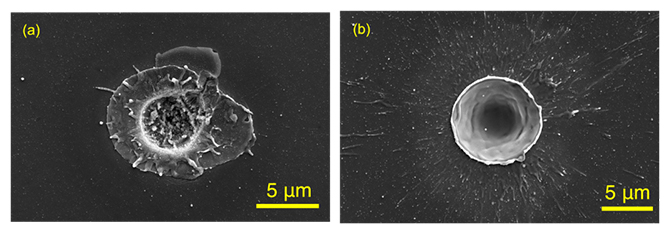2023-04-10 マサチューセッツ大学アマースト校
研究チームは、ホッキョクグマの毛皮に着想を得て、光を伝導するトップレイヤーと暗い物質PEDOTでコーティングされたナイロンからなる下層の二層構造の繊維を開発し、既に商業的に利用可能な製品にまで発展させている。
この繊維は、太陽光が降り注いでいる場合や部屋が十分に明るい場合、コットン製のジャケットよりも30%軽く、10℃低い温度でも快適に保つことができる。
<関連情報>
- https://www.umass.edu/news/article/new-textile-unravels-warmth-trapping-secrets-polar-bear-fur
- https://pubs.acs.org/doi/full/10.1021/acsami.2c23075
極地動物から着想を得た体内放射エネルギー収集用ソーラサーマルテキスタイル Solar Thermal Textiles for On-Body Radiative Energy Collection Inspired by Polar Animals
Wesley Viola, Peiyao Zhao, and Trisha L. Andrew
ACS Applied Materials and Interfaces Published:April 5, 2023
DOI:https://doi.org/10.1021/acsami.2c23075

Abstract
Humans use textiles to maintain thermal homeostasis amidst environmental extremes but known textiles have limited thermal windows. There is evidence that polar-dwelling animals have evolved a different mechanism of thermoregulation by using optical polymer materials to achieve an on-body “greenhouse” effect. Here, we design a bilayer textile to mimic these adaptations. Two ultralightweight fabrics with complementary optical functions, a polypropylene visible-transparent insulator and a nylon visible-absorber–infrared-reflector coated with a conjugated polymer, perform the same putative function as polar bear hair and skin, respectively. While retaining familiar textile qualities, these layers suppress dissipation of body heat and maximize radiative absorption of visible light. Under moderate illumination of 130 W/m2, the textile achieves a heating effect of +10 °C relative to a typical cotton T-shirt which is 30% heavier. Current approaches to personal radiative heating are limited to absorber/reflector layer optimization alone and fail to reproduce the thermoregulation afforded by the absorber–transmitter structure of polar animal pelts. With increasing pressures to adapt to a rapidly changing climate, our work leverages optical polymers to bridge this gap and evolve the basic function of textiles.



